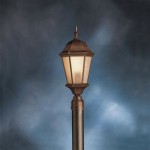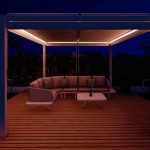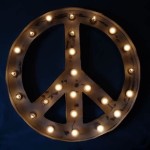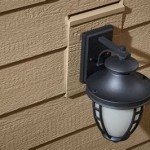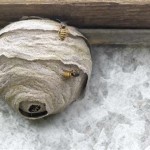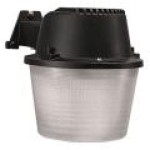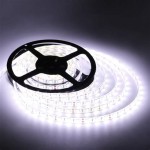Best Settings For Low Light Outdoor Photography
Low light outdoor photography presents unique challenges for photographers. The scarcity of ambient light necessitates a different approach compared to daytime shooting. Achieving well-exposed, sharp, and noise-free images requires a careful balance of camera settings and a practical understanding of the available light. This article will explore the optimal camera settings and techniques for navigating low-light outdoor photography scenarios.
Understanding the Exposure Triangle
The foundation of successful low-light photography lies in understanding the relationship between three key camera settings: aperture, shutter speed, and ISO. This is often referred to as the "exposure triangle." Each setting affects not only the brightness of the image but also other aspects like depth of field, motion blur, and image noise.
Aperture: Aperture refers to the opening in the lens that allows light to pass through. It is measured in f-stops (e.g., f/1.8, f/2.8, f/4). A wider aperture (lower f-stop number) lets in more light, which is crucial in low-light situations. A wider aperture also results in a shallower depth of field, meaning that only a small portion of the image will be in focus. This can be used creatively to isolate subjects and create a blurred background (bokeh). However, it also means careful focusing is essential.
Shutter Speed: Shutter speed is the length of time the camera's shutter remains open, exposing the sensor to light. It is measured in seconds or fractions of a second (e.g., 1/1000s, 1/60s, 1s). Slower shutter speeds allow more light to enter the camera, but they also increase the risk of motion blur, both from camera shake and subject movement. A general rule of thumb is to use a shutter speed that is at least equal to the reciprocal of the focal length of the lens to avoid camera shake (e.g., if using a 50mm lens, use a shutter speed of at least 1/50s). Slower shutter speeds are often necessary in low light, requiring the use of a tripod or other stabilization method.
ISO: ISO measures the sensitivity of the camera's sensor to light. A higher ISO setting makes the sensor more sensitive to light, allowing for brighter images in low-light conditions. However, increasing the ISO also introduces image noise (grain), which can degrade image quality. It is crucial to find a balance between a bright enough image and acceptable noise levels. Newer camera models generally perform better at higher ISOs than older models.
Recommended Camera Settings for Various Low-Light Scenarios
The optimal camera settings for low-light outdoor photography will vary depending on the specific scenario and available light. The following provides guidelines for different situations:
Cityscapes at Dusk: Cityscapes at dusk offer a good amount of ambient light from streetlights and building illumination. Start with an aperture of f/8 to f/11 to achieve a large depth of field, ensuring sharpness throughout the scene. Set the ISO to the lowest possible value that allows for a reasonable shutter speed. A tripod is essential for capturing sharp images at slower shutter speeds (e.g., 1/4s to several seconds). Bracketing exposures can also be helpful to capture a wider dynamic range and prevent blown-out highlights in bright areas.
Night Sky Photography (Stars): Photographing the night sky requires maximizing light gathering capabilities. Open the aperture as wide as possible (e.g., f/2.8 or wider). Use a high ISO (e.g., 1600 to 6400, depending on the camera's performance) to capture faint stars. The shutter speed needs to be carefully considered to avoid star trails caused by the Earth's rotation. The "500 rule" is a guideline for determining the maximum shutter speed before star trails become noticeable: divide 500 by the focal length of the lens. For example, with a 24mm lens, the maximum shutter speed would be approximately 20 seconds (500/24 = 20.8). A sturdy tripod is absolutely necessary for this type of photography. Consider using a remote shutter release or the camera's self-timer to minimize camera shake.
Moonlit Landscapes: Moonlit landscapes offer a subtle and atmospheric light. The moon's light can be surprisingly bright, but it still requires careful exposure. Start with an aperture of f/4 to f/8, depending on the desired depth of field. Use a moderate ISO (e.g., 400 to 1600) to minimize noise. Shutter speeds will typically be in the range of several seconds to several minutes, requiring a tripod. Pay attention to the moon's phase, as a full moon will provide significantly more light than a crescent moon. Experiment with different shutter speeds to capture the desired level of detail in the landscape.
Ambient Lit Portraits: Capturing portraits in low-light outdoor settings requires more creativity and a greater understanding of your camera's capabilities. Prioritize a wide aperture (f/1.8 to f/2.8) to allow in as much light as possible and isolate the subject. Increase your ISO to a value that allows for a reasonably fast shutter speed (e.g., 1/60s or faster) to avoid motion blur, especially if the subject is moving. If possible, position your subject near a light source, such as a streetlight or window, to provide more illumination. An external flash can also be used, but use it sparingly and diffuse the light to avoid harsh shadows. Consider using a reflector to bounce available light onto the subject's face.
Techniques for Enhancing Low-Light Photography
Beyond camera settings, several techniques can improve the quality of low-light outdoor photographs:
Image Stabilization: Image stabilization (IS) or Vibration Reduction (VR) technology, found in some lenses and camera bodies, helps to reduce the effects of camera shake. This allows for slower shutter speeds without introducing motion blur. While image stabilization can be helpful, it is not a substitute for a tripod in very low light conditions.
Manual Focus: Autofocus systems can struggle in low-light situations. Switching to manual focus and using focus peaking (if available on the camera) can improve focus accuracy. Magnifying the image on the LCD screen can also help to fine-tune focus.
Shooting in RAW Format: Shooting in RAW format preserves more image data than shooting in JPEG format. This allows for greater flexibility in post-processing, including adjusting exposure, white balance, and noise reduction. RAW files require specialized software to process, but the increased image quality is often worth the effort.
Noise Reduction: Noise reduction can be applied in post-processing to reduce the appearance of image noise. However, excessive noise reduction can soften the image and reduce detail. Use noise reduction sparingly and carefully monitor the results.
Light Painting: Light painting is a technique that involves using a handheld light source to illuminate a scene during a long exposure. This can be used to add creative effects or to selectively illuminate specific areas of the scene. Various light sources can be used, such as flashlights, colored lights, or even smartphones. The key is to keep the light source moving during the exposure to create smooth and even illumination.
Utilizing Available Light Sources: Pay attention to existing light sources in the environment, such as streetlights, building lights, and moonlight. These light sources can be used to create interesting shadows and highlights. Experiment with different angles and positions to find the most flattering light.
Post-Processing Techniques: Post-processing is an essential part of low-light photography. Software like Adobe Lightroom or Capture One can be used to adjust exposure, contrast, white balance, and noise reduction. Careful post-processing can significantly improve the quality of low-light images.
Mastering low-light outdoor photography requires practice and experimentation. By understanding the exposure triangle, utilizing appropriate camera settings, and incorporating the techniques described above, photographers can capture stunning images in challenging lighting conditions.

Professional S Guide To Landscape Lighting Photography

How To Shoot Wedding Photos In Low Light Jasmine Star

The Best Iso Settings For Amazing Low Light Photography Adobe

Iso How To Take Control And Get Better Photos In Low Light

Understanding Exposure In Photography Rei Expert Advice

Night Photography Tips For Beginners Adobe

Star Photography The Definitive Guide 2024 Dave Morrow

Light Trail Photography Adobe

Best Low Light S Comparison Chart Phototraces Landscape Photography Tips Dslr

Diffraction Aperture And Starburst Effects

